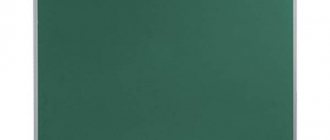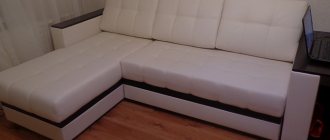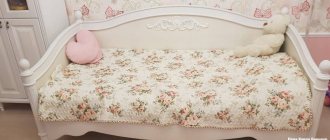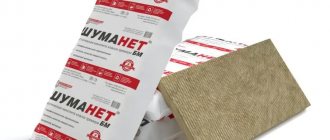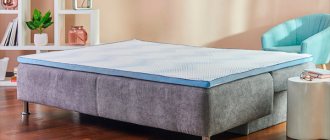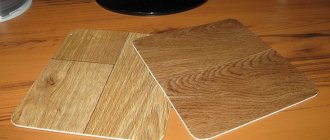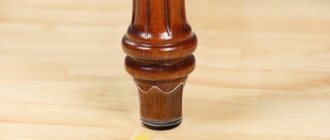Good day everyone! In this article we will look at a material called eco-leather. Agree, this is something new. As for me, I first came across this name while walking around the shops. When I asked the seller the composition of a bag or shoes, the answer I often heard was: “Eco leather.” This term was not clear to me, and I immediately put the things I liked in their place and made a choice in favor of genuine leather. And now I suggest you take apart this material piece by piece, because new is not always bad. Ready? Then let's begin.
1. Origin of eco-leather; 2. Production of eco-leather; 3. Properties of eco-leather; 4. Types of eco-leather; 5. What is made from eco-leather? 6. Recommendations for the care of eco-leather; 7. Customer reviews.
From the history of eco-leather
If we look back to bygone days, it was probably animal skins that became one of the first materials that humans began to use to make shoes and clothing.
And, despite the passing of millennia, genuine leather remains popular. It is difficult to find a replacement for this quality material with unsurpassed properties. Although the need for this is long overdue for many reasons.
Real leather is a material that not everyone can afford.
The increased demand for this material led over time to the rapid development of livestock farming and the leather industry. And this, in turn, leads to the release and increase in greenhouse gas emissions. It has been proven that the livestock industry produces 18% of the total amount of harmful emissions into the atmosphere.
Modern technologies for tanning leather are a complex, lengthy procedure, including about 50 stages of raw material processing. In this case, special equipment, chemical solutions, and factory dyes are used, which pollute the atmosphere, the environment and harm the health of people involved in production.
More and more people are considering natural leather from an ethical point of view, believing that it is immoral to kill animals for the sake of new clothes or a pair of shoes.
Taken together, all this stimulates scientists to search for and innovatively develop cheaper analogues of natural leather - leather substitutes.
The first leather substitutes, such as the well-known leatherette, could not replace natural leather in quality and properties. And they were inferior to it in all respects, thus forming a negative attitude towards the artificial cheap analogue. And only in 1963, American scientists managed to invent a material with unique properties - eco-leather made of synthetic fiber.
Difference from natural material
Eco-leather is an excellent substitute for natural raw materials and has the same properties and qualities. It is just as soft, elastic, environmentally friendly and easy to process and care for.
But they still have distinctive features:
- Synthetic – not capable of causing allergic reactions, like some types of genuine animal skins.
- Air permeability also varies.
- The organoleptic properties (feeling of pleasantness) and thermal conductivity of eco are slightly higher than those of the alternative sample.
What is eco-leather made from?
The raw material for obtaining the new artificial fabric was a “breathable” microporous polyurethane film applied to a woven base made of polyester or cotton. The top is painted in one color or another.
The material can consist of ¾ of natural compressed waste - leather shavings, cotton or artificial cellulose fibers. Everything else is a synthetic polymer that is safe for health - polypropylene.
All its necessary properties are formed during the synthesis process, making it possible not to use harmful plasticizer additives in the production of eco-leather. Therefore, the prefix “eco” is used in the name of the material.
The performance properties of eco-leather depend on the thickness of the polyurethane film. The thicker it is, the better these characteristics are. But this increases the rigidity of the material.
Due to the fact that during the production process the fabric and polypropylene layers are processed using the embossing method, the canvas looks almost the same as real leather. It is not always possible to determine what type of material it is by looking at the texture and pattern.
But modern eco-leather can be obtained not only from petroleum products. There are examples of innovative materials made from very unusual raw materials. This is certainly not mass production. But who knows... Perhaps the future lies with them.
Mushroom leather
For the first time, the technology for producing leather based on mushrooms was patented by the American companies EcovativeDesign and MycoWorks, which produce materials not from the fruiting bodies of mushrooms, but from mycelium or mycelium - the thread-like underground part of the fungus.
From mycelial cells grown on agricultural waste, a strong, elastic fabric of the required size is obtained. With this technology, waste is converted into useful material without high energy and raw material costs. In addition, it is a biodegradable material that does not harm nature.
Designer Nina Fabert, founder of the German brand Zvnder, uses organic raw materials differently. It produces a material similar in texture and density to leather from the fruiting body of tinder fungi. The designer uses it to make purses, wallets, cases, and hats. The process of turning the elastic inner pulp of the mushroom into a kind of skin is quite labor-intensive. And things made from this material are expensive.
“Mushroom” skin has not yet become widespread. Although some designers have already shown interest in this material. In the collection of British fashion designer Stella McCartney, for example, sports trousers and a corset made of “mushroom leather” appeared. And in the French fashion house Hermes - bags.
Pineapple leather or Pinatex leather
Carmen Hijosa, a Spanish researcher and founder of the Ananas Anam company, came up with the idea of making fabric from pineapple leaves as an alternative to leather. They turned out to be an ideal raw material for producing non-woven fabric.
On plantations in the Philippines, after harvest, pineapple leaves were thrown away like natural waste. Hiyosa, without the use of pesticides or additional water consumption, turned them into a durable canvas.
Long, thin cellulose fibers are extracted from the leaves of the plant during the process of removing the top layer. Then they are dried in the sun, cleaned, and used to make the base of the Pinatex fabric - a non-woven mesh.
After treatment with a protective layer, the canvas becomes very similar to ordinary leather. And not just in appearance. The material is moisture-resistant, soft and flexible, breathable, and easy to care for. Sold not in pieces, but in rolls.
Clothes, shoes, home textiles, and furniture are made from it. Many famous brands and designers collaborate with Ananas Anam and produce shoes, clothing, and furniture upholstery from Pinatex fabric.
Apple leather
The Italian company Frumat came up with the idea of using apple pulp as a basis for the production of eco-leather. This happened in the Bolzano region, where a lot of apples are grown.
Every year, when processing the crop, a large amount of apple waste remains after squeezing the juice. The company's developers proposed mixing the pulp, which consists of cellulose fibers, with polyurethane in a 1:1 ratio.
The result was AppleSkin material of various thicknesses, textures, and cellulose-based embossing. Leather clothing made from apples is a natural alternative to leather, which is produced half from food industry waste.
“Fruit” material is environmentally friendly, retains breathability, retains heat, does not get wet, and does not contain animal products. Bags, shoes, and clothes are made from it.
Cactus leather or Desserto (organic leather)
The elastic, smooth material, reminiscent of leather, was obtained from cactus leaves using a patented technology by two enterprising Mexicans. To do this, they cut off mature leaves without harming the plant, leaving young shoots, crushed them, dried them in the sun and processed them.
Leather made from cacti is durable and wear-resistant. The material is breathable and partially biodegradable. Bags, shoes, and furniture upholstery are made from it. And this is a completely suitable replacement for both synthetic materials and natural animal skin.
What type of fabric is this?
Eco-leather is a synthetic analogue of natural leather.
The fabric is a breathable material, does not cause an allergic reaction, is resistant to temperature changes and is very easy to care for. Products made from this material are valuable for their beauty and long service life.
Fabric production is completely environmentally friendly and does not require slaughter. Synthetic leather can be dyed in many colors and decorated with patterns.
Eco-leather is produced industrially by combining a fabric base (cotton or polyester) with polyurethane. It is performed by pressing raw materials, as a result of which two layers turn into one and create an analogue of genuine leather.
The finished material is rolled into rolls weighing up to 80 kg, packaged and sent to warehouses.
Is eco-leather environmentally friendly?
Of course, if it is made from organic raw materials. For example, from pineapples, mushrooms, apples or cacti.
If this concerns traditional eco-leather, then this question cannot be answered unequivocally. A cotton base is used in its production. And everything is good here from an environmental point of view.
But here is the second component of eco-leather – polyurethane film. This is a polymer plastic material with various additives that provide it with different consistencies: hard, liquid, viscous, plastic.
From the point of view of toxicity, polyurethane foam, which, depending on its condition, is used in various industries, according to its manufacturers, is harmless to humans. However, during the production of polyurethane, various components are used that can be harmful to the environment.
What standards are used in production? What do they take into account?
There are strict norms and rules that apply to eco-leather at the production stage. They are described in GOST - 57019-2016.
Thus, the production of synthetic material occurs under the strict control of the state and according to its clear requirements:
Breaking load, not less:
- longitudinal direction – 25 N;
- transverse direction – 20 N.
- Stiffness, longitudinal direction – no more than 70 cN.
- Resistance to repeated bending – at least 150 kilocycles.
- Color fastness to friction – at least 4 cycles.
- Elongation under load, not less than:
- longitudinal direction – 12-30 daN/cm;
- transverse direction – 70-10 daN/cm;
- diagonal direction – 35-60 daN/cm.
You can find out whether synthetic leather meets the standards in the passport from the manufacturer's factory, which must be on each product.
Pros and cons of eco-leather
The advantages of eco-leather include the following properties:
The material perfectly imitates genuine leather. In texture and properties it is close to the analogue.
This is a frost-resistant material that does not tan, like regular leatherette, in severe frost. Withstands temperatures down to -35 °C.
Permeable to water vapor and air due to micropores that penetrate the film. But it does not let water through.
Does not emit harmful substances and toxins, has no odor and does not cause a greenhouse effect, safe and hypoallergenic.
This is a soft, pleasant to the touch, elastic, warm, odorless material.
Shape-resistant - clothes do not stretch on the knees, elbows, or stretch out.
Tear-resistant, wear-resistant and durable material. Resistant to abrasion and damage - does not crack over the years, like natural leather.
UV insensitive - does not deteriorate when exposed to sunlight.
Varied in color and texture.
Undemanding in care.
Inexpensive compared to genuine leather.
Less expensive and more humane production process.
The material is easy to cut and sew.
Minuses:
Some stains, such as marker stains, are very difficult to remove from the surface of the canvas.
Not suitable for long-term wear in sunny, hot weather - the surface of the artificial material gets very hot. Wearing clothes or shoes made from cheap types of eco-leather becomes stuffy and uncomfortable.
If the surface layer of the canvas is damaged, even minor damage cannot be repaired or repaired in any other way. That is, eco-leather products cannot be repaired.
Recommendations for caring for eco-leather
To ensure that your favorite things made of nanomaterial remain in good condition for as long as possible, you must adhere to the following recommendations:
- To remove dust or dirt from the surface of the product, it is best to use microfiber cloths pre-moistened in water. But after cleaning, the surface of the product should be wiped dry;
- Under no circumstances should you use hard brushes to clean the surface of the product from dirt, as the surface of eco-leather can be easily damaged;
- Do not dry eco-leather items on a radiator or in direct sunlight;
- artificial leather care products can also be used for natural leather;
- You can wash eco-leather in cool water, but only with baby or laundry soap;
- to remove dirty stains that cannot be removed with a damp cloth, it is allowed to use ammonia, lemon, hydrogen peroxide, a solution of medical alcohol diluted to a concentration of 50%;
- It is better to protect furniture upholstery and shoes made of eco-leather with impregnations for natural leather to preserve their original appearance for a longer period of time;
- Eco-leather products can be dry-cleaned.
Types of eco-leather
The artificial analogue of genuine leather is divided into several types based on strength, wear resistance, finishing method and composition.
Eco leather on microfiber
The fabric uses polyester-coated fiber as a base. Fabrics with a porous structure are characterized by properties such as breathability and water-repellent properties.
PU leather
The canvas consists of three layers: high-quality, thin polyurethane coating, a layer of rejected genuine leather and a cotton layer. This type of eco-leather is not inferior in quality and properties to its natural counterpart.
PVC leather
Rigid, porous, dense, but elastic fabric made of a fibrous base impregnated with polymer compounds and coated with a layer of PVC.
Eco-leather perforated
It is distinguished by an unusual texture with a small pattern printed on the canvas with a hole.
Eco-leather, self-adhesive
Durable adhesive-based material. Thicker and resistant to mechanical damage.
Stretch leather
Three-layer, elastic and very thin material: a polymer coating is applied on both sides to a cotton base. The peculiarity of this type is its ability to stretch well without damage or cracking. Mostly clothes are made from it - skirts, tops, trousers, shirts.
Exotic eco leather
Using special presses, the imitation of snake or crocodile skin is achieved by embossing on the surface of the canvas.
Kinds
There are several types of material available on the market:
Perforated
For manufacturing, many holes are specially made on the canvas. This creates a certain pattern and achieves greater breathability;
Quilted
Decorative stitching is done like a quilt. The technique is used in the design of sofas, armchairs and other furniture;
Smooth
The surface does not have any irregularities characteristic of leather.
Nappa
In appearance it perfectly duplicates natural leather;
According to the type of base, eco-leather is:
- on cotton.
- on microfiber.
By ability to shine:
- glossy.
- matte.
How to distinguish eco-leather from genuine leather
It is not always possible to visually distinguish eco-leather from natural leather. It is especially easy to make a mistake when leather dust is sprayed onto the fabric (back) side of the leatherette and the material looks very realistic. A complete illusion is created that this is real leather. But if you set fire to natural leather with a match, a smell characteristic only of this material will appear.
In products made from genuine leather, craftsmen often leave a “live cut,” that is, an unprocessed cut. While sections in artificial leather products are painted over, “sealed” with rubber paint or tucked. The seam edges of eco-leather are always smooth and can be covered with fabric on top.
Natural leather products can cause allergies - they have a specific smell. While an eco-analogue is a material that is odorless or treated with a fragrance.
Testing by tactile sensations: the properties of natural and artificial leather manifest themselves differently in use, for example, when contacting the surface of upholstery in a car or a sofa made of genuine leather, a person sweats more than on eco-leather upholstery. Although both fabrics will feel warm to the touch.
Eco-leather is tactilely more pleasant than natural leather. Things made from it look brighter, since its surface is better painted. And in terms of consumer properties it is close to its natural analogue. And even surpasses it in hygroscopicity and strength.
You can understand that this is not a natural fabric by looking at the reverse side of the fabric. In eco-leather, it is a whitish textile base that prevents tearing and stretching of the fabric and gives it additional strength. In its natural counterpart, it is a fleecy surface.
The color changes on the folds of eco-leather products – these places become lighter. While when natural leather is deformed, no changes in color occur.
Tips for choosing
In addition to color and design, the buyer should pay attention to the quality of the upholstery.
If an interested person is considering the option of eco-leather, then when choosing furniture it is advisable to pay attention to the following nuances:
- The PU designation indicates the thickness of the inner layer of the fabric. The larger it is, the denser and stronger the material. When choosing between PU 70% and 40, preference should be given to the first option;
- uniformity of the layer , absence of visible defects;
- price . Too low a price indicates not only the low quality of the furniture itself, but also the upholstery. It is necessary to approach issues of price-quality ratio wisely.
Expert opinion
Korzhavin Daniil Dmitrievich
Designer of stylish home furniture
The surface of the material should be checked by touch; it should be smooth and pleasant, moderately soft. There should be no pungent, chemical smell. There should be no deep wrinkles or creases at the corners and seams.
What is the difference between eco-leather and leatherette
Over time, people learned to produce leather substitutes of various purposes and compositions - cheap analogues of natural leather. Against the background of thicker and rougher material, eco-leather stands out due to its properties close to natural leather. And, of course, not as harmful as leatherettes and fabric-reinforced PVC leatherettes.
Polyvinyl chloride is the main component from which artificial leather is produced. And during operation it can release hazardous substances. This property increases at high temperatures or in the sun. In the production of eco-leather, safe polypropylene is used. Which, by the way, is used to make dishes and water pipes. And in terms of the content of synthetics in the composition of artificial materials, eco-leather has the least amount of it.
Unlike leatherette, fabric impregnated with polyurethane allows air to pass through well, ensuring its normal circulation. Leatherette becomes rough at low temperatures and cracks. But what they have in common is that both materials are artificial. In addition, both of them look like genuine leather, and both are hygroscopic.
To understand whether it is leatherette, eco-leather or natural material, some techniques are used.
If you place a piece of genuine leather on your palm and cover another one on top, the material should become warm, tender, and soft upon contact with the warmth of the human body. If this does not happen, it is synthetic leatherette, which feels much rougher.
Another way is to drop a little vegetable oil on the surface of the canvas. Eco-leather or genuine leather will simply absorb it within a day without leaving a trace. However, eco-leather is slightly inferior to natural leather in its ability to absorb liquid.
If after a day a dent appears at the site where the oil was applied, and the skin becomes hard and rough, it is leatherette. Under the influence of oil, the plasticizers contained in the polyvinyl chloride film are destroyed.
This experiment helps to distinguish real material from fake and proves that eco-leather is characterized by the same high qualities as natural leather. However, it must be borne in mind that not all natural leather absorbs oil without leaving a stain. It depends on the dressing of the skin. If the surface of the canvas has not been treated with a protective layer, an oil stain may remain on it, which will not disappear anywhere.
Unlike eco-leather, which smells practically nothing or has a slight aroma, leatherette has a sharp, chemical smell of plastic or rubber. For these reasons, artificial leather made from PVC is now practically not used in products. Basically, it has already been replaced by eco-leather.
How much does the fabric sell for?
Since eco-leather is made from plant and chemical materials, it is much cheaper than natural leather. Thus, the price range for synthetic fabric ranges from 460 to 2650 rubles per linear meter.
The price of the material depends on the thickness of the canvas, the quality of the raw materials used for it and the intended use.
Application
The advantages of eco-leather are so obvious that this material quickly replaced other artificial fabrics on the market. It began to be used not only in light industry, but also in other sectors of the national economy.
Eco-leather clothes
Eco-leather clothing varies according to purpose and season. For everyday wear it can be dresses, skirts, suits, trousers. Depending on the style, cut, purpose, leather clothing can be combined with shoes, sneakers, coats and down jackets.
Here are a few ways to combine leather trousers with other clothing items that have not gone out of fashion over the past few years.
At first glance, it may seem that this item requires some special approach when selecting clothes for it. Lack of understanding of what to combine them with and how to combine them sometimes stops you from buying them.
Stylists recommend treating leather trousers as just trousers. And you should combine them with other clothes based not so much on the material, but rather on the style of a particular model and the overall style.
A universal set for leather trousers of any cut - black leather trousers and an oversized white shirt plus matching shoes to complete the look: comfortable, adding a sports pair, or elegant, using dress shoes.
Leather trousers plus an oversized sweater or a smart casual sweater for every day - smart casual.
If you add an oversized jumper or any basic sweater to eco-leather trousers, the set in this version becomes more interesting.
A more provocative look will be achieved if high-waisted leather trousers are combined with cropped, wide, short knitted models.
The current set is leather trousers and sweatshirts, hoodies, sweatshirts. That is, any sports-style knitwear or a plain jacket-shirt, complemented by comfortable sneakers.
A semi-fitted cardigan in calm shades goes well with eco-leather trousers of different widths and lengths.
Trousers with wide legs can be combined with a jacket or jacket in a men's style, complementing the set with a top, sneakers or elegant heeled ankle boots (depending on the mood of the set and the intended image).
A brightly colored leather set of jacket and trousers is suitable for situations when you want to attract attention. For an evening look or a special occasion, leather trousers can be complemented with a statement top and dressy shoes. Eco-leather trousers look great with down jackets, cropped voluminous jackets, and coats.
As for outerwear, leather jackets with slanting zippers are still a favorite in the off-season. A fashionable biker jacket looks great with any outfit at any time of the year.
Warm, light, beautiful outerwear with a fur backing made of eco-leather is very relevant for the off-season, with rain or snow, with endless temperature changes from plus to minus. These can be lightweight models of sheepskin coats, jackets of various styles, long and short vests.
What else is made from eco-leather?
These are boots, shoes, shoes.
Various accessories: bags, gloves, belts, wallets, berets, leather Panama hats, wide headbands of various colors.
Eco-leather is used in the medical industry for the manufacture of dentures. For upholstery of upholstered furniture and car covers. For making rugs, interior bouquets, panels, figured pillows.
In which store can I buy ECO?
You have two options. Purchase at various retail outlets where the material is sold, or search on the Internet. There you will definitely choose the option you need from a large assortment. Many sites provide samples with photographs, descriptions and prices.
Based on your own preferences and price category, you should independently make a choice in favor of products made from cheap artificial fabric or from more expensive but high-quality calfskin, for example, travel accessories from the Italian ]Piquadro[/anchor].
In this article, we discussed everything about eco-material, told what it is, whether it is genuine leather or not, what its composition is, and how eco-leather is used on bags.
Video: leather, eco-leather, leatherette
Video comparison of three materials: leather, eco-leather and artificial leather, their tests and properties.
See similar articles
- Chenille - thick velvety fabric for interiors
- Kulirka - thin cotton fabric for children's clothing
- Nylon is a soft and pleasant elastic synthetic fabric
- Denim is a versatile, thick cotton denim fabric
- Poplin - light and durable fabric for bed linen
- Tweed - fabric made from natural wool for suits
If you liked the article, share it with your friends!
